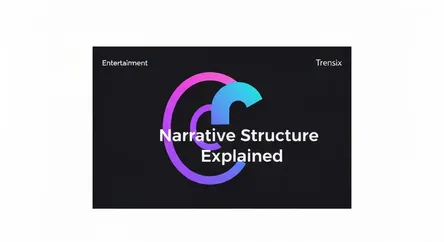Entertainment
Narrative Structure Explained

Discover narrative structure, the essential framework of storytelling in movies. Learn how different models shape the plots and emotional journeys we love.
What is it?
Narrative structure is the architectural framework of a story, dictating the order and arrangement of events in a plot. It's the skeleton that gives a film its shape, pacing, and coherence. The most famous model is the Three-Act Structure: Act I (Setup), where the world and characters are introduced; Act II (Confrontation), where the protagonist faces escalating obstacles; and Act III (Resolution), where the climax occurs and conflicts are resolved. Other models, like Freytag's Pyramid, offer similar blueprints for building a compelling story. This structure ensures that events unfold in a logical and emotionally engaging sequence, guiding the audience through the narrative journey from beginning to end.
Why is it trending?
Narrative structure is a timeless concept, but its discussion is trending thanks to the rise of online film analysis and video essays. Content creators on platforms like YouTube frequently deconstruct popular movies, breaking down their plots and revealing the underlying structural techniques used by screenwriters. This has made audiences more 'film literate' and curious about the mechanics behind their favorite stories. Viewers are no longer just passive consumers; they are actively interested in understanding how filmmakers craft tension, develop characters, and deliver satisfying emotional payoffs, making narrative structure a key topic of conversation.
How does it affect people?
Narrative structure is the invisible force that shapes an audience's emotional experience. A well-executed structure builds suspense, creates empathy for characters, and makes the final climax feel earned and impactful. It manipulates audience expectations, setting up questions in the first act that are answered in the third, leading to a sense of catharsis and satisfaction. When a story feels compelling, logical, and emotionally resonant, it's often because of its strong narrative backbone. It's the difference between a random series of events and a meaningful journey that stays with the viewer long after the credits roll.